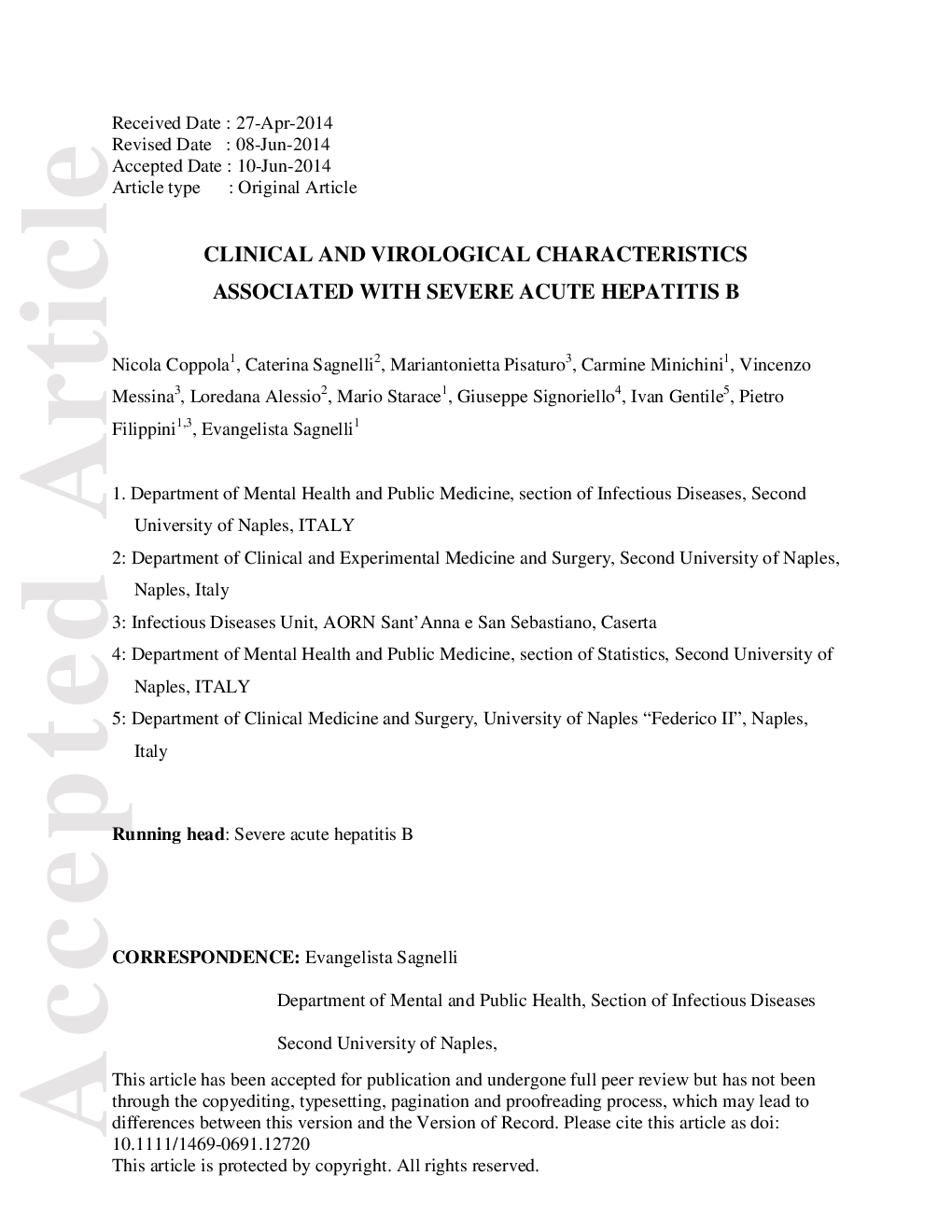| Article ID | Journal | Published Year | Pages | File Type |
|---|---|---|---|---|
| 6129804 | Clinical Microbiology and Infection | 2014 | 20 Pages |
Abstract
To identify early predictors of a severe or fulminant course in patients with acute viral hepatitis B (AVH-B). One hundred and thirty-eight patients with symptomatic acute hepatitis B observed from 1999 to 2012 were enrolled. For each patient, the demographics, risk factors for the acquisition of hepatitis B virus (HBV) infection, clinical, biochemical and virological data (HBV DNA, HBV DNA sequences) were recorded and analysed. The HBV mutants in the polymerase region were sought in 110 (87%) patients by direct sequencing, and the rtM204V/I mutations also by an allele-specific PCR. AVH-B was severe in 13 (9.4%) of the 138 patients enrolled, fulminant in 6 (4.3%) and with a normal clinical course in 119. The 19 patients with severe or fulminant AVH-B more frequently than the 119 with a normal course stated intravenous drug use (63.2% versus 36.1%, p 0.04) and were HBV-DNA negative (31.6% versus 11.8%, p 0.03) and anti-hepatitis C virus (HCV) positive (57.9% versus 19.3%, p 0.0008); the prevalences of different HBV genotypes and of the rtM204V/I mutant were similar in these three forms of AVH-B. A multivariate logistic regression analysis identified a pre-existing HCV chronic infection as the only factor independently associated with a severe or fulminant clinical course of AVH-B (OR 4.89, 95% CI 1.5-15.94, p 0.01). A pre-existing HCV chronic infection was identified as the only factor independently associated with a severe clinical presentation of acute hepatitis B, an association most probably due to the combination of the liver lesions caused by acute hepatitis B and the pre-existing histological abnormalities related to HCV chronic infection.
Keywords
Related Topics
Life Sciences
Immunology and Microbiology
Microbiology
Authors
N. Coppola, C. Sagnelli, M. Pisaturo, C. Minichini, V. Messina, L. Alessio, M. Starace, G. Signoriello, I. Gentile, P. Filippini, E. Sagnelli,
